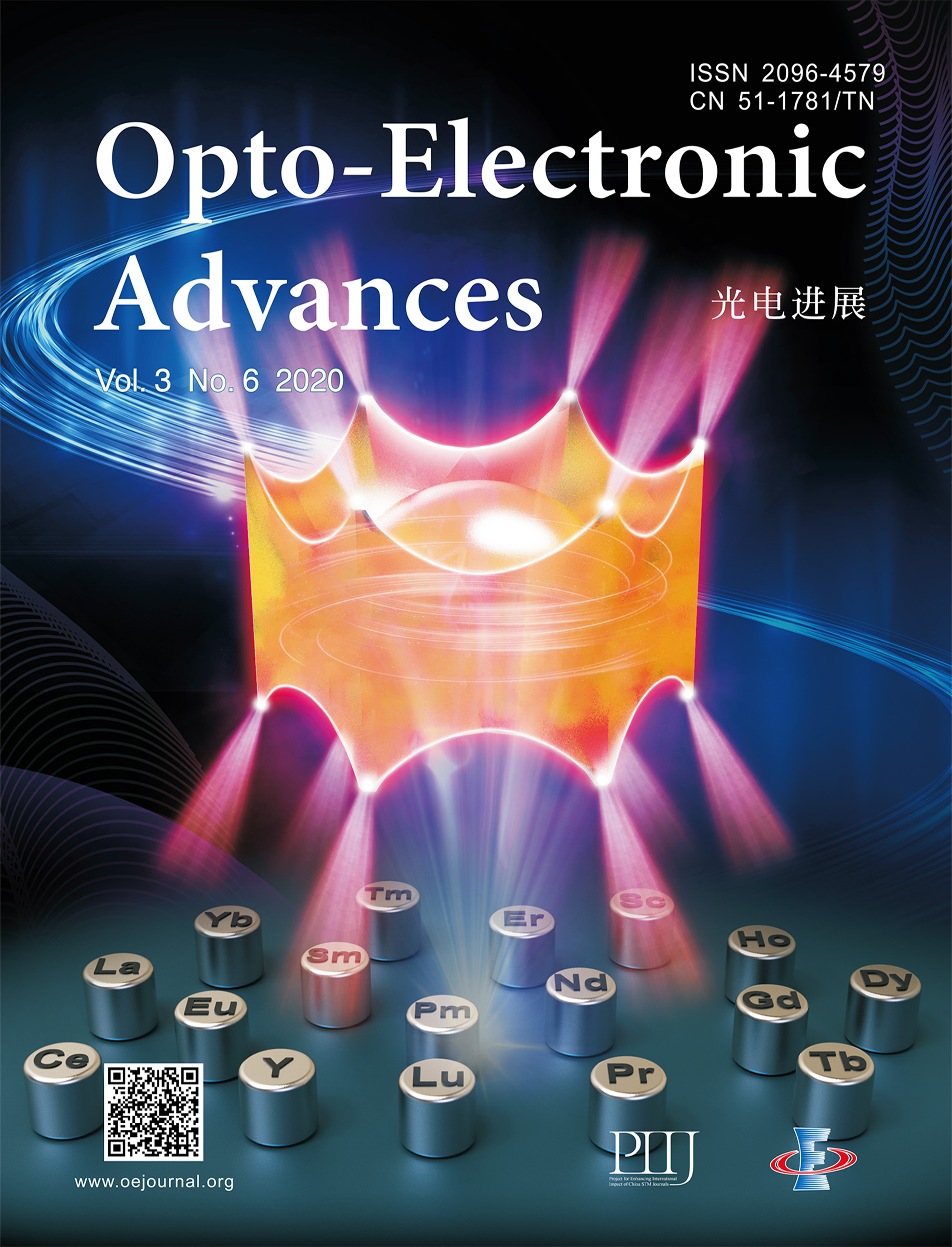2020 Vol. 3, No. 6
Cover Story:Zhang C J, Zhang C Y, Zhang Z L, He T, Mi X H et al. Self-suspended rare-earth doped up-conversion luminescent waveguide: propa-gating and directional radiation. Opto-Electron Adv 3, 190045 (2020).
Professor Hongxing Xu from Wuhan University and Prof. Hairong Zheng from Shaanxi Normal University reported a self-suspended UC-luminescent waveguide by using an RE-doped crown-shaped microparticle and investigated the UC-luminescent propagation and directional emission. The UC-luminescent pattern with controllable directional emission is observed under the excitation at 980 nm, which has a promising approach for obtaining luminescence emission with certain spatial distribution and higher brightness. Benefitting from the special morphology of the crown-like NaYF4:Yb3+/Er3+ microparticle, an air layer is formed between the waveguide and substrate, which greatly reduces the energy-coupling loss and enhances transmission efficiency. The spatial emission angle and intensity distribution are investigated in detail by applying Fourier imaging detection and numerical simulation. By analyzing the transmission and emission modes, they found that the fluorescence total reflection mode is suitable for the self-suspended UC luminescent waveguide. This work provides a new method for achieving controllable directional fluorescence emissions and obtaining improved detection efficiency by guiding the emission direction, which has potential applications in 3-dimensional displays, micro-optoelectronic devices and self-fluorescence micron lasers.
Lee E, Sun B, Luo J Q, Singh S, Choudhury D et al. Compact pulsed thulium-doped fiber laser for topographical patterning of hydrogels. Opto-Electron Adv 3, 190039 (2020).
We report the generation of high energy 2 μm picosecond pulses from a thulium-doped fiber master oscillator power amplifier system. The all-fiber configuration was realized by a flexible large-mode area photonic crystal fiber (LMA-PCF). The amplifier output is a linearly-polarized 1.5 ns, 100 kHz pulse train with a pulse energy of up to 250 μJ. Pulse compression was achieved with (2+2)-pass chirped volume Bragg grating (CVBG) to obtain a 2.8 ps pulse width with a total pulse energy of 46 μJ. The overall system compactness was enabled by the all-fiber amplifier design and the multi-pass CVBG-based compressor. The laser output was then used to demonstrate high-speed direct-writing capability on a temperature-sensitive biomaterial to change its topography (i.e. fabricate microchannels, foams and pores). The topographical modifications of biomaterials are known to influence cell behavior and fate which is potentially useful in many cell and tissue engineering applications.

-
{{article.year}}, {{article.volume}}({{article.issue}}): {{article.fpage | processPage:article.lpage:6}}. doi: {{article.doi}}{{article.articleStateNameEn}}, Published online {{article.preferredDate | date:'dd MMMM yyyy'}}, doi: {{article.doi}}{{article.articleStateNameEn}}, Accepted Date {{article.acceptedDate | date:'dd MMMM yyyy'}}
-
{{article.year}}, {{article.volume}}({{article.issue}}): {{article.fpage | processPage:article.lpage:6}}. doi: {{article.doi}}{{article.articleStateNameEn}}, Published online {{article.preferredDate | date:'dd MMMM yyyy'}}, doi: {{article.doi}}{{article.articleStateNameEn}}, Accepted Date {{article.acceptedDate | date:'dd MMMM yyyy'}}

 E-mail Alert
E-mail Alert RSS
RSS



